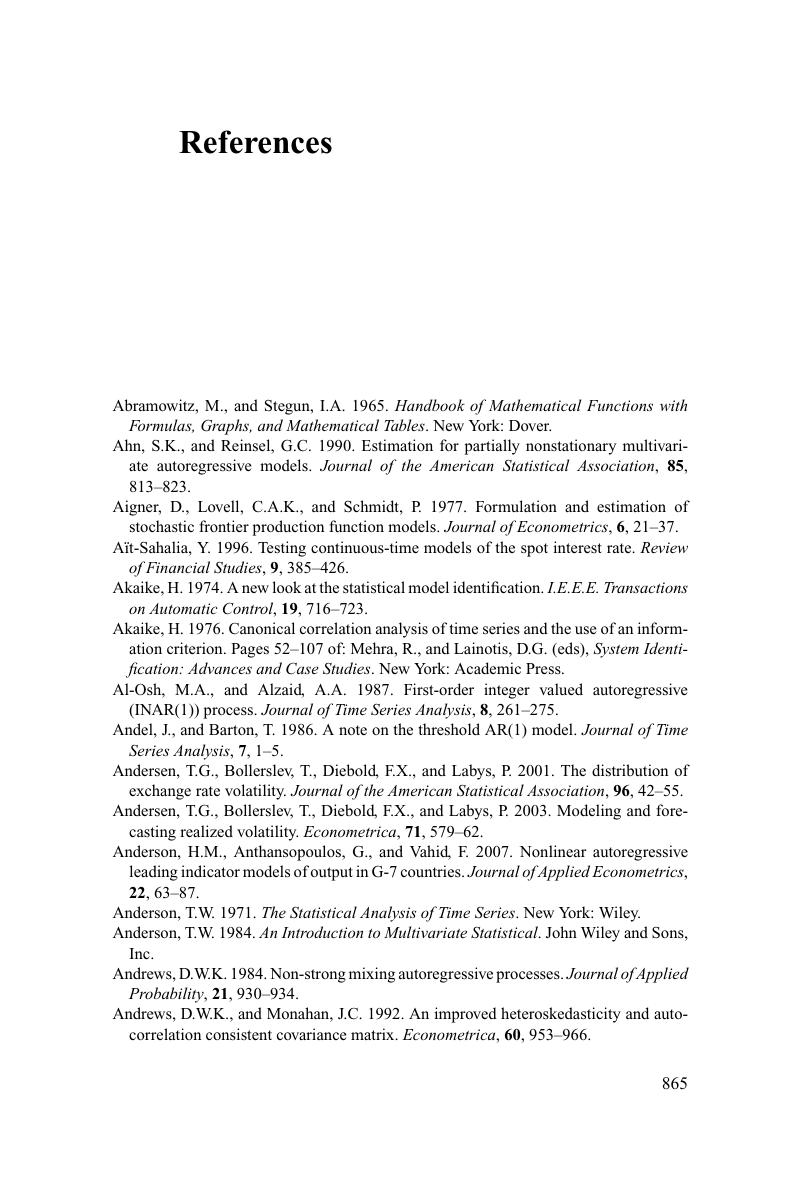Book contents
- Frontmatter
- Contents
- List of Illustrations
- Computer Code Used in the Examples
- Preface
- PART ONE Maximum Likelihood
- PART TWO Regression Models
- PART THREE Other Estimation Methods
- PART FOUR Stationary Time Series
- PART FIVE Nonstationary Time Series
- PART SIX Nonlinear Time Series
- Appendix A Change of Variable in Density Functions
- Appendix B The Lag Operator
- Appendix C FIML Estimation of a Structural Model
- Appendix D Additional Nonparametric Results
- References
- Author Index
- Subject Index
- References
References
Published online by Cambridge University Press: 05 January 2013
- Frontmatter
- Contents
- List of Illustrations
- Computer Code Used in the Examples
- Preface
- PART ONE Maximum Likelihood
- PART TWO Regression Models
- PART THREE Other Estimation Methods
- PART FOUR Stationary Time Series
- PART FIVE Nonstationary Time Series
- PART SIX Nonlinear Time Series
- Appendix A Change of Variable in Density Functions
- Appendix B The Lag Operator
- Appendix C FIML Estimation of a Structural Model
- Appendix D Additional Nonparametric Results
- References
- Author Index
- Subject Index
- References
Summary

- Type
- Chapter
- Information
- Econometric Modelling with Time SeriesSpecification, Estimation and Testing, pp. 865 - 876Publisher: Cambridge University PressPrint publication year: 2012

